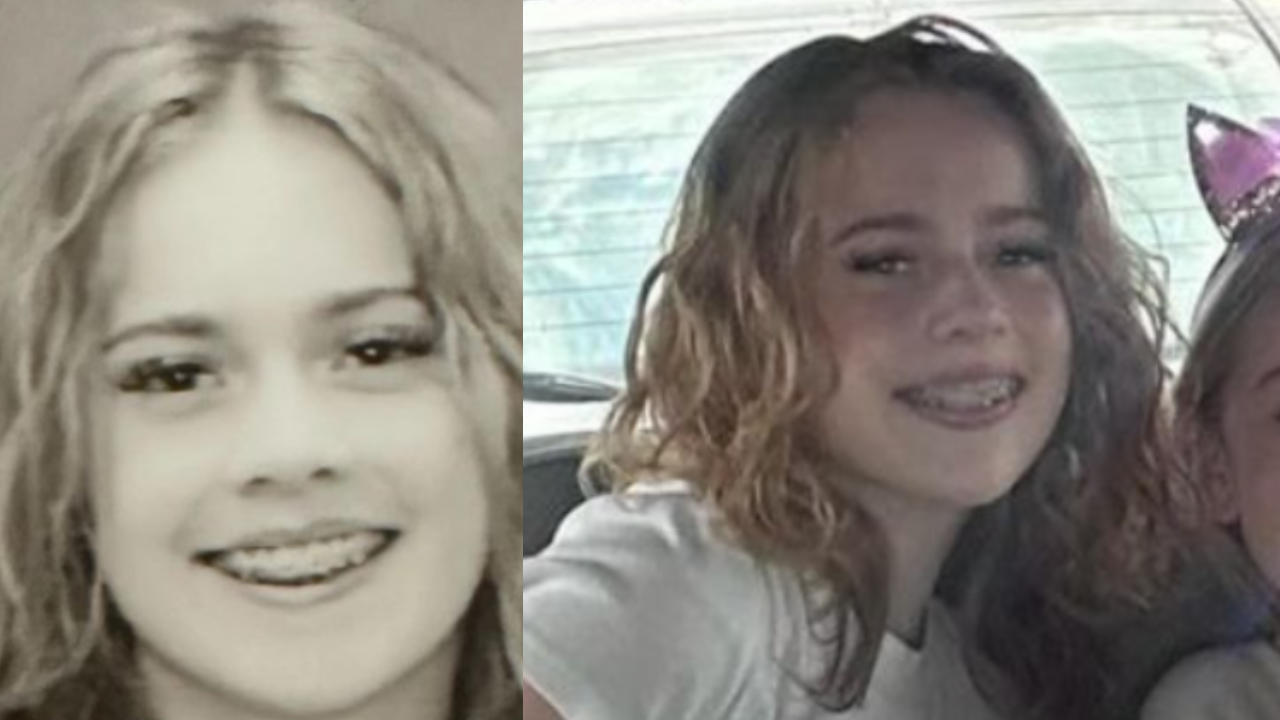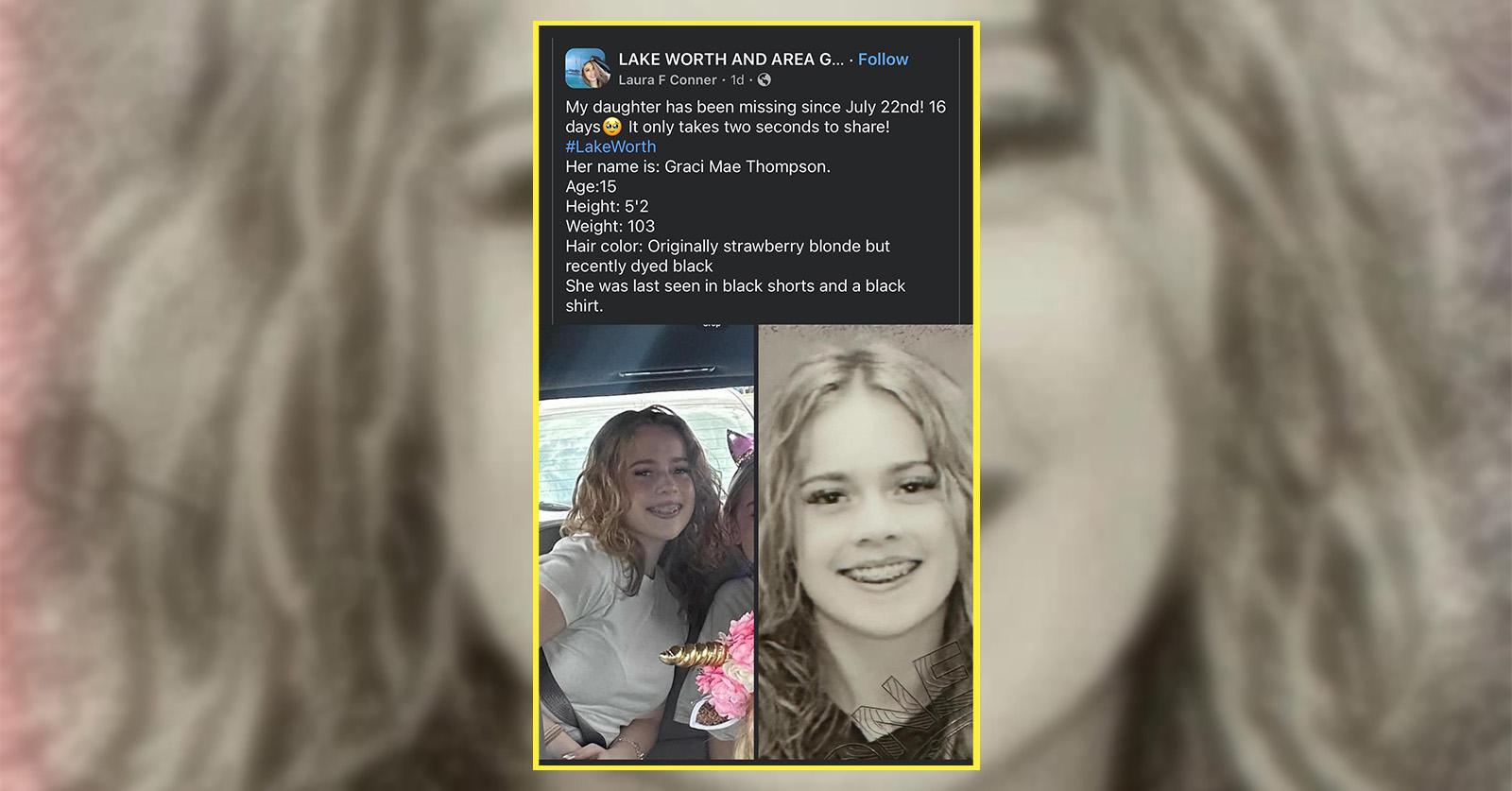Is a young girl named Gracie Mae Thompson truly missing, or is something more sinister at play? The disturbing truth is that social media is being exploited to spread a viral hoax, preying on our deepest fears and anxieties, and potentially putting vulnerable individuals at risk.
The digital landscape, once hailed as a realm of boundless connectivity, has become a breeding ground for misinformation and malicious intent. The case of "Gracie Mae Thompson" serves as a chilling example of how easily fabricated narratives can spread like wildfire, leveraging the emotional vulnerability of online communities. Several posts, including an August 8th Facebook post (with a direct and archive link), depict a smiling young girl accompanied by a public safety notice. The posts claim that Gracie Mae Thompson, a fifteen-year-old from Tomball, Texas, has gone missing. These posts have been designed to generate shares and likes, but do not constitute legitimate missing person reports.
However, investigations reveal a deceptive practice at work. Despite claims of her disappearance on July 22, 2024, and the various locations mentioned (Odessa, Baltimore, Tomball, Texas), there is no credible evidence to support these claims. Authorities, including the Odessa Texas Police Department and the National Center for Missing & Exploited Children, have confirmed the absence of any records related to a missing Gracie Mae Thompson. This indicates a carefully constructed deception, exploiting the human impulse to help and share information.
- The Ultimate Guide To Gigi And Damian Uncover Their Story And Impact
- Where And When Did Donnie Baker Die
| Category | Details |
|---|---|
| Name | Gracie Mae Thompson (as reported in the posts) |
| Age (as reported) | 15 years old |
| Alleged Location of Disappearance (as reported) | Tomball, Texas (initially), Odessa, Texas, Baltimore (later iterations) |
| Alleged Date of Disappearance | July 22, 2024 |
| Status as Reported | Missing |
| Official Confirmation | No record of a missing person report or any other evidence to support the claims |
| Source of Information | Social Media (Facebook posts) |
| Authentic Source | National Center for Missing & Exploited Children (NCMEC) |
The posts circulating on social media, often including a photo of a young girl identified as Gracie Mae Thompson, are designed to go viral. The creators are capitalizing on the public's empathy and concern for missing children, leveraging the potential for increased visibility and engagement to achieve their goals. The goal is to generate as many likes and shares as possible, drawing in people from all over the world. It is a strategy of exploiting emotional response.
The National Center for Missing & Exploited Children has issued warnings about these kinds of scams, highlighting the horrific tactics of hackers using fake missing child posters. Posts from August 8, 2024, serve as a reminder of how these posts can be changed and the original information deleted. Although the original post might advertise real estate, it can change the information claiming the girl is missing from somewhere else.
It is important to note that the image used in these posts has been confirmed as not a legitimate missing person report. It is highly likely that the photo is being used without permission, further emphasizing the deceptive nature of the campaign. The alleged disappearance date of July 22, 2024, further complicates the matter, given the inconsistencies in the reported locations and the lack of official reports.
- Tina Turner Funeral Service A Heartfelt Farewell
- The Ultimate Guide To James And Phil Robertson Hunting Legends
The evolution of these posts, which at times advertised real estate before displaying the Gracie Mae Thompson information, suggests that the creators are driven by financial gain and social manipulation. They are not only using the emotional response to trick people, but also trying to hack accounts. The posts use the emotional response associated with missing person cases to trick people into sharing the post, thereby increasing its visibility and reach.
This practice is not new. Social media is rife with examples of individuals and groups exploiting sensitive topics like missing persons cases to gain attention, promote products, or harvest personal information. The proliferation of such scams underscores the urgent need for critical thinking and media literacy. The best way to address these scams is to verify information with trusted sources.
The lack of verifiable information, coupled with the confirmations from law enforcement agencies and the National Center for Missing & Exploited Children, unequivocally indicates that the "Gracie Mae Thompson" posts are fraudulent. These posts are designed to deceive the public.
The use of images and the inclusion of seemingly specific details, such as the girl's supposed age and location, lends an air of credibility to the scam. The goal is to make the post go viral by accumulating as many likes and shares as possible from all over the world.
In light of this, the public is strongly urged to exercise extreme caution when encountering such posts on social media. Instead of sharing these posts, users are encouraged to report them to the social media platform and verify information through official channels, such as law enforcement agencies or organizations like the National Center for Missing & Exploited Children (NCMEC).
It's important to remember that sharing these posts can inadvertently contribute to the spread of misinformation, potentially causing unnecessary alarm and diverting resources from legitimate missing person investigations. These posts are using human emotion to get what they want.
These types of scams are dangerous because they could potentially compromise the safety of individuals and harm the credibility of genuine missing person reports. They erode trust in online communities. They can also lead to real-world consequences, such as the harassment of innocent people or the creation of false leads that hinder legitimate investigations.
The Gracie Mae Thompson case highlights the urgent need for heightened awareness and proactive measures to combat online misinformation. Users should always verify information before sharing it and report suspicious content to the appropriate authorities.
Instead of generating shares and likes, the public should be generating awareness. By staying vigilant, promoting critical thinking, and supporting legitimate sources of information, we can work together to mitigate the dangers of social media manipulation and protect the most vulnerable members of our society. Don't fall for the scams; use your better judgment.
- Jeremy Allen Whites Birthplace Uncovering The Roots Of A Hollywood Star
- Jamie Lee Curtis A Legacy Of Hollywood Glamour And Talent


